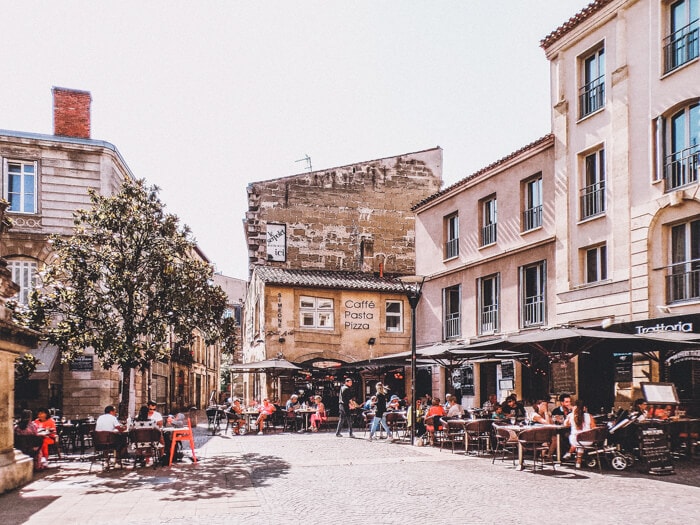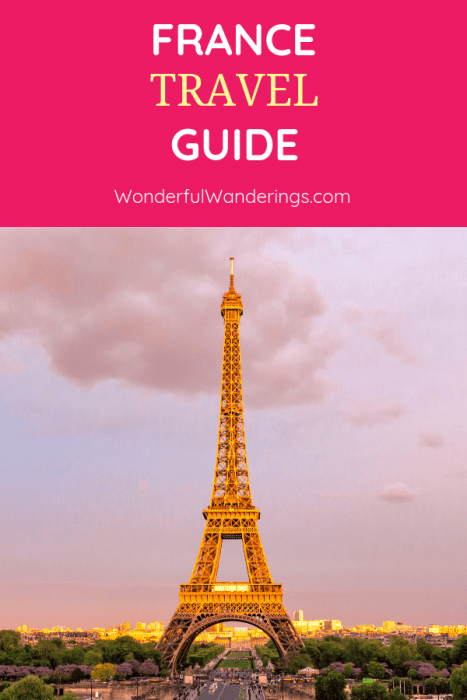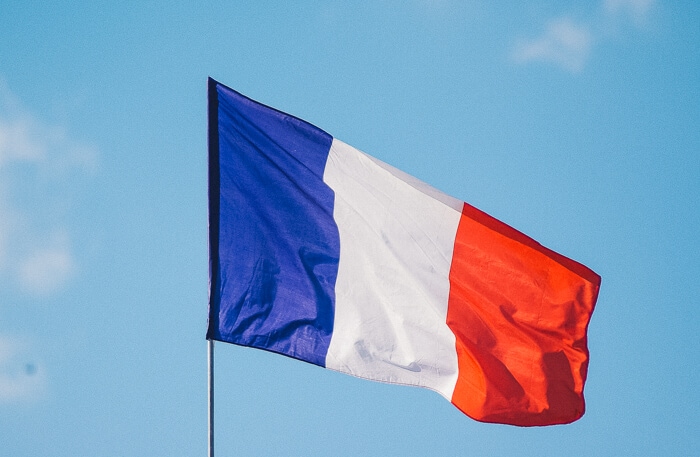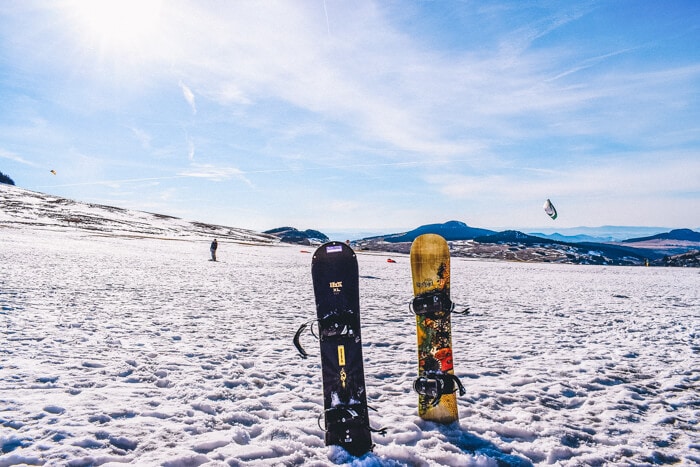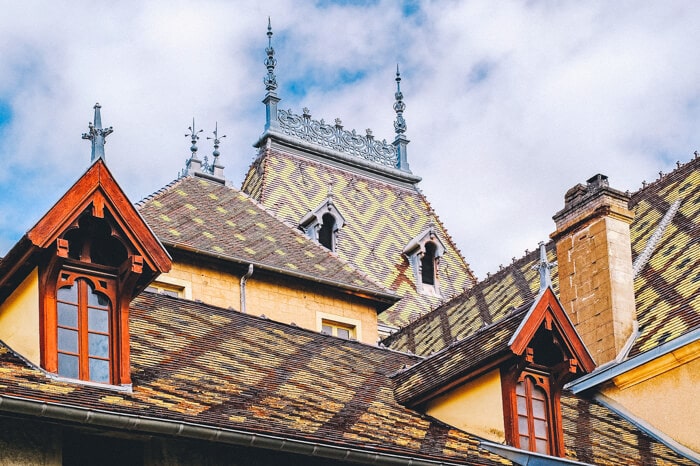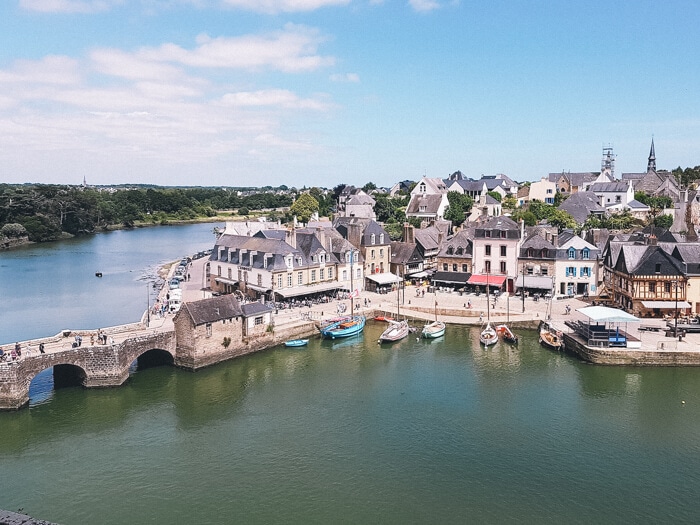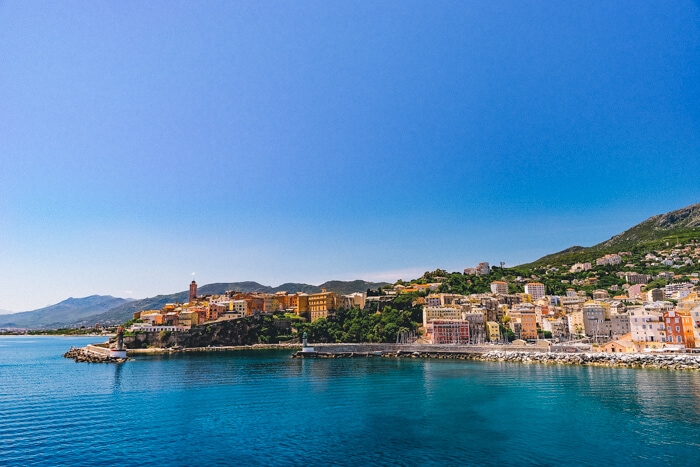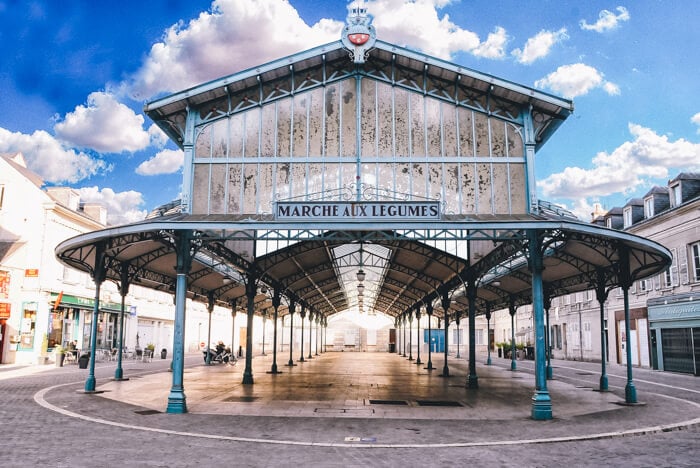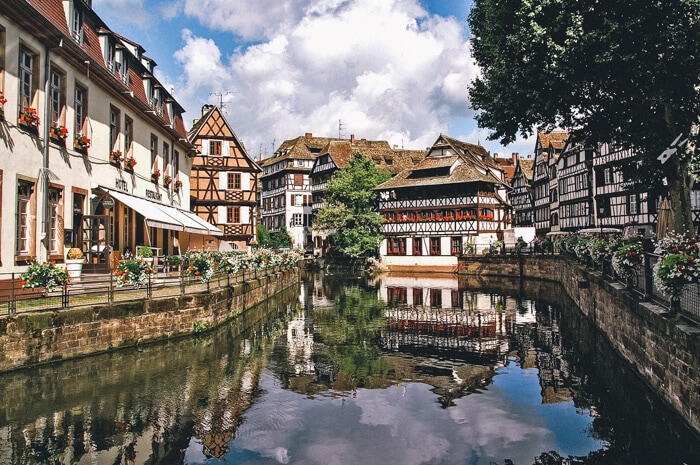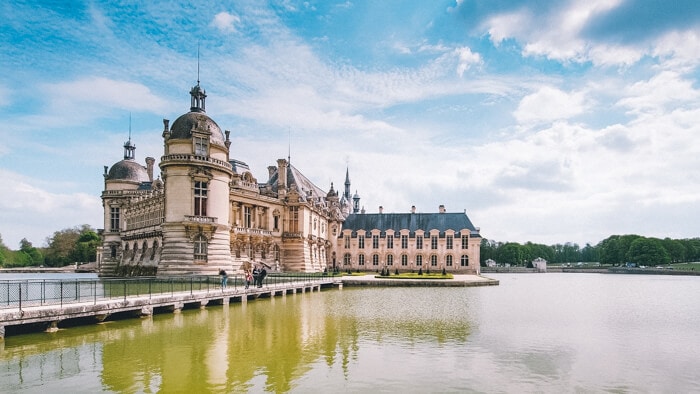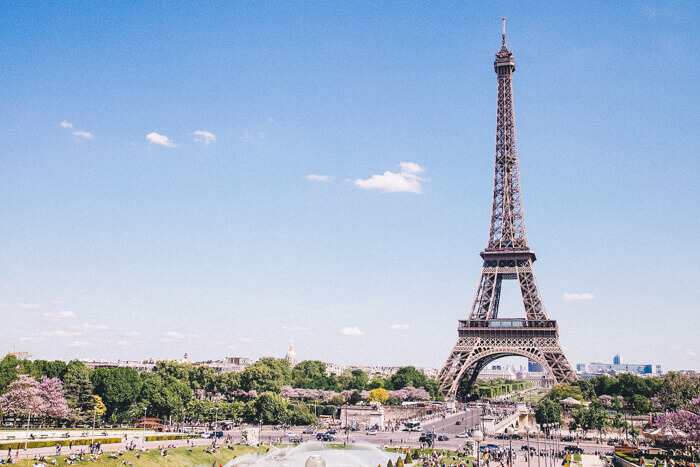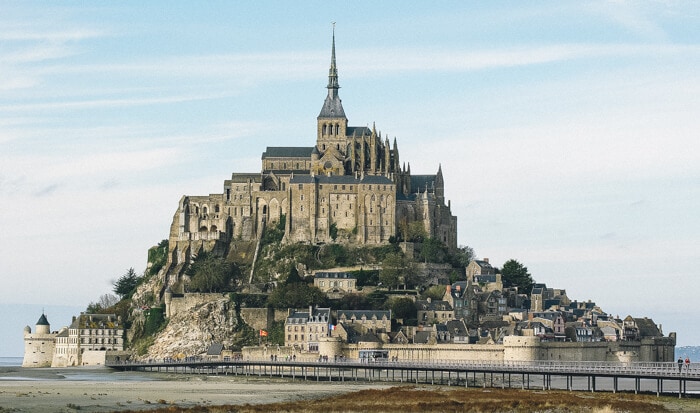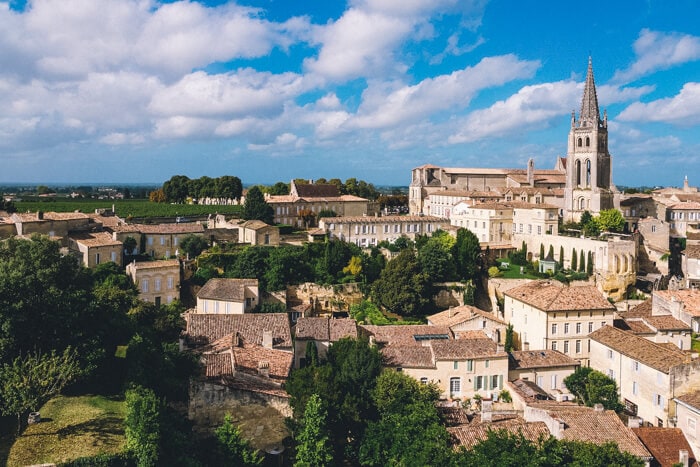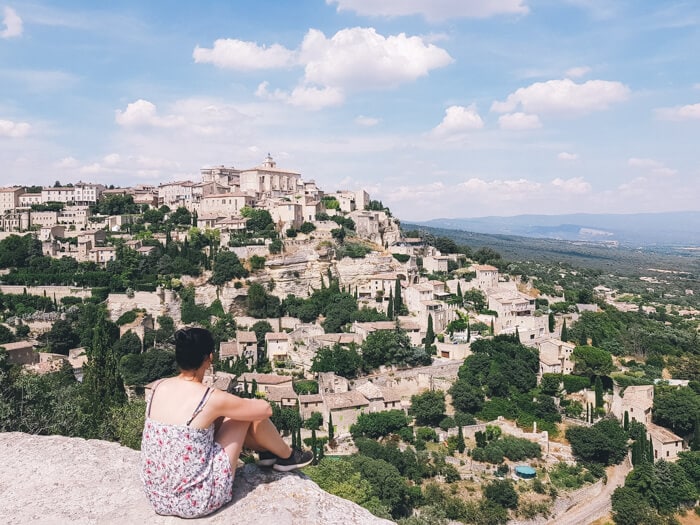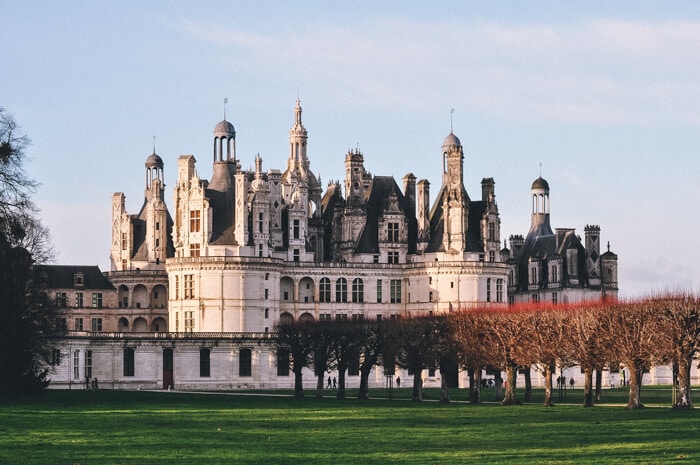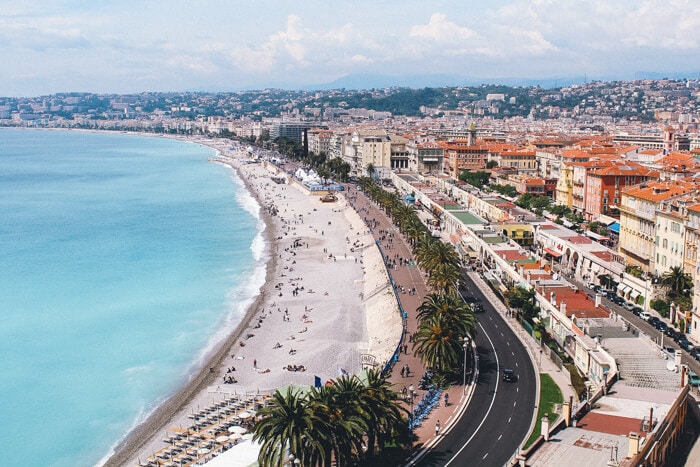France welcomes more tourists than any other country in the world every year, with 33 million international visitors in 2022. It’s hardly surprising, France is famed for iconic attractions like the Eiffel Tower, the Louvre Museum, the gorgeous Côté d’Azur and French riviera. It’s also known for its sublime gastronomy and many fine wines.
Make sure to check out the tips for traveling in France in this guide on the different tourist regions, what to eat, when to go and much more to plan your own trip to France.
France is located in Western Europe and shares its borders with Belgium, Luxembourg, Germany, Switzerland, Italy, Spain, and Andorra. The principality of Monaco sits on the south coast too. It is one of the European countries that founded the EEC and the EU and is a member of NATO. It has a number of overseas territories including Martinique, Guadeloupe, and Reunion.
Contents
- Plan a trip to France: quick facts
- How to plan a trip to France: Check out the different regions
- 1. Auvergne-Rhône-Alpes
- 2. Bourgogne-Franche-Comté (formerly Bourgogne and Franche-Comté)
- 3. Bretagne
- 4. Corse
- 5. Centre-Val de Loire
- 6. Grand-Est (formerly Alsace, Champagne-Ardenne and Lorraine)
- 7. Hauts-de-France (combining Nord-Pas-de-Calais and Picardie)
- 8. Île-de-France
- 9. Normandie (combining Basse-Normandie and Haute-Normandie)
- 10. Nouvelle-Aquitaine (Aquitaine, Limousin and Poitou-Charentes)
- 11. Occitanie (formerly Languedoc-Roussillon and Midi-Pyrénées)
- 12. Pays de la Loire
- 13. Provence-Alpes-Côte-d’Azur
- 14-18: overseas territories The overseas territories of France are Guadeloupe, Guyane, Martinique, Réunion and Mayotte. How to go to France Entry requirements France is part of the Schengen zone and can be entered freely from other countries also in this zone. Citizens from EU countries which are not in the Schengen zone can still enter freely but must show their passport when entering the country. Citizens from the United States and the rest of the world do not require a visa for travel of up to 90 days, but their passport must be valid for at least 3 months beyond their date of departure, and they must have at least one blank page in their passport. How to get to France By plane
- By bus
- By train
- By ferry
- Drive to France
- How to travel around France
- What to pack for France
- The best time to travel to France
- What to eat and drink in France
- Famous events in France
- Public holidays in France
- Cultural customs to be aware of in France
- Where to stay in France
- Don’t forget travel insurance
- Basic phrases and their pronunciation
- Safety in France
- The use of cash and cards in France
- Calling abroad, WiFi and data use in France
- Tipping in France
- A brief history of France
- Posts about France
Plan a trip to France: quick facts
Size: 640,679 km² or 246,201 sq mi
People living there: more than 66,600,000
Capital: Paris
Governmental structure: democratic constitutional republic with semi-presidential system, where power is shared with a prime minister.
National day: July 14
Timezone: Central European Time (CET) / UTC+1 / GMT+1 + (for the overseas territories) UTC+3, UTC+4, UTC-3 and UTC-4.
Currency: euro (EUR)
Power voltage and socket type(s): 230V, plug types E and C. If these don’t match with your devices, make sure to bring a universal adapter.
Official religion(s)/Freedom of religion: Freedom of religion. 80% of the people who are religious in France, are Roman Catholic, followed by Muslims, unaffiliated citizens, and Protestants.
Official language(s) and general knowledge of English: French is the official language. English is widely spoken in urban areas.
Drives on this side: right
International driver’s licence accepted? yes
Phone code: +33
Looking for more quirky facts about France? Check out this post.
How to plan a trip to France: Check out the different regions
France is a diverse country comprised of 18 regions, including overseas territories. There is a neverending list of things to see in France, so take a look at what each region has to offer so you can plan your France itinerary according to your interests.
1. Auvergne-Rhône-Alpes
Auvergne-Rhône Alpes is a large region in the center/south-east of the country. It’s popular among nature lovers, hikers, and here you’ll find several of France’s best ski resorts, as well as the rolling hills and lavender of the Rhône Valley.
Not only is it popular among nature lovers, but it’s one of the country’s most fascinating historical spots, with Romanesque churches, medieval castles, and typical French villages dotting the region. The historical city center of Lyon, France’s 2nd largest city, is even a UNESCO World Heritage site.
Other important cities in Auvergne-Rhône Alpes include Grenoble, Saint-Étienne, and Clermont-Ferrand.
2. Bourgogne-Franche-Comté (formerly Bourgogne and Franche-Comté)
Half of this region is Bourgogne, which is better known among English speakers as Burgundy, the home of many fine wines. However, there’s more to this part of central France than its national beverage. Spend a few days exploring beautiful old towns like Dijon, Besançon, Dijon, and Montbéliard before heading for the peace and quiet of the countryside.
Teeming with castles, ancient abbeys, and exquisite chateaus, it’s a historian’s dream. See the sights by taking a relaxing trip down one of the region’s many canals, passing a number of picturesque villages and towns, as well as historical and cultural sights.
For those who prefer to get out and active, there are extensive hiking, biking, and horse-riding trails.
3. Bretagne
Bretagne, better known as Brittany, as a region which juts out into the Atlantic Ocean, meaning that here there’s a lot of coastline to enjoy. Here, you’ll find the famous walled city of St. Malo, dramatic clifftops, and a number of beautiful islands clustered off the coast.
Bretagne has a proud and rich history, and like Wales, Scotland, and Galicia, was home to the Celtic people hundreds of years ago. Remnants of the Celtic culture are still seen in traditional Breton dancing, which you’ll be able to enjoy at traditional fêtes and festivals.
Thanks to the sheer number of castles and fortresses, Bretagne is like stepping back in time. The biggest cities here are Rennes and Brest.
4. Corse
Corse (Corsica) is an island just over 300 km from the French mainland, sat in the temperate waters of the Mediterranean Sea. Probably best known for being the birthplace of Emperor Napoleon Bonaparte, nowadays the island is a playground for outdoor adventures, as well as relaxing and leisurely boat trips, jaunts to hilltop villages, and sampling delicious local food.
The geographical diversity of the island means that the soaring and craggy mountains, perfect for climbing, are only a short drive from turquoise blue waters lapping against sandy bays. The main cities on the island are Ajaccio and Bastia.
5. Centre-Val de Loire
This region, unsurprisingly, is located in the center of the country. It’s also known as Central Loire or Val de Loire, as the Loire river flows through the province. Many tourists visit here as it boasts a lot of medieval and renaissance architecture. Not only is it popular with tourists, but many expats relocate to the area.
The countryside is one of the area’s biggest pluses, the flat land is perfect for cycling, walking, and settling down by a river with a picnic. The northern part of the Loire Valley is very close to Paris, so it’s also popular with day-trippers from the capital city.
The capital of the region is Orleans, but the biggest city is Tours.
6. Grand-Est (formerly Alsace, Champagne-Ardenne and Lorraine)
You may notice a German influence in Grand-Est. The northeastern region shares a border with Germany and has actually been passed between both countries a number of times. The regional capital is Strasbourg.
Grand Est is one of France’s most famous wine-producing regions, as it’s home to Alsace and the king of wines, champagne. If you’re interested in finding out more about these wines, it’s a great idea to do the Route du Champagne, which will show you the beautiful countryside, and give you the opportunity to try wines from the region’s vineyards.
Grand-Est is also a must for history buffs, due to its rich heritage. Several World War I battles took place here, and there are many museums where you can learn more and pay your respects to those who lost their lives.
7. Hauts-de-France (combining Nord-Pas-de-Calais and Picardie)
Hauts-de-France is the northernmost region in France. It shares a border with Belgium and offers easy access to the United Kingdom. On a clear day, you can even see the White Cliffs of Dover from the top of Calais lighthouse!
As with many French regions, Hauts-de-France has a rich heritage and a number of UNESCO World Heritage sites in the cities of Lille, Amiens, and Beauvais. It’s also the site where famous Second World War battles took place, and Dunkerque is a poignant and memorable place to visit.
Read my post on things to do in Lille here.
Away from the historical side of the region, Hauts-de-France boasts beautiful, sweeping bays which are heaven for birdwatchers, sheer chalk cliffs, and picturesque fishing villages.
8. Île-de-France
This region receives more visitors than any other in the world, as it’s home to the city of lights and capital of France, Paris as well as to the famous Palace of Versailles and Eiffel tower.
Outside of the capital city, the region is also home to castles, forests, and dairy farms which produce one of France’s most symbolic cheeses – brie. Because Paris is located in Île-de-France, it’s the best-connected region in the country, making it easy to get to any of the other regions on this list. At the same time, it’s also one of the busiest parts of France and traffic on the ring road in Paris (the Périphérique) is infamous.
Read my tips on how to spend a weekend in Paris.
9. Normandie (combining Basse-Normandie and Haute-Normandie)
Normandy is home to arguably the world’s most famous abbey, and one of the most iconic attractions in France, Mont-Saint-Michel. The fortified abbey is only accessible from the mainland by a causeway, but even if you don’t make it across it’s a sight to behold.
Normandy has a fascinating history and has contributed hugely to French art. Famous impressionists including Monet were born here, and you can even visit his garden and see the famous water lilies which inspired the world-renowned painting.
Normandy is easily reachable from Paris. It’s famous for welcoming and friendly hospitality, and delicious regional cheese such as Pont-l’Évêque, Neufchâtel, and Camembert.
The main cities in Normandy are Rouen, Caen, and Le Havre.
10. Nouvelle-Aquitaine (Aquitaine, Limousin and Poitou-Charentes)
Nouvelle-Aquitaine is the biggest region in France. This is where you’ll find the French Basque country, as the region shares a border with Spain. The Basque country only takes up a small part of Nouvelle-Aquitane though, and you’ll find that the three merged regions have something exciting to offer.
Aquitaine is home to the region’s biggest city, Bordeaux. The city is perched on the Atlantic coast, and there you’ll find Michelin starred restaurants and some of the world’s finest wines. Limousin is a paradise for outdoor enthusiast: its deep gorges, rivers, and lakes offer excellent kayaking, sailing, and canoeing, all a stone’s throw away from quaint and charming villages.
Poitou-Charentes is the gateway to the Massif-Central mountain range while having a beautiful coastline with sandy beaches. Ile de Ré alone has 2 of France’s 10 most beautiful villages. The main cities in this region are Bordeaux, Limoges, Pau, and La Rochelle.
11. Occitanie (formerly Languedoc-Roussillon and Midi-Pyrénées)
Occitanie is where you’ll find the Pyrenees mountains to the south, and the Mediterranean coast to the east, making it a year-round destination where you can sunbathe in summer, and ski in the winter.
The region is synonymous with medieval French culture, incredible cathedrals, abbeys and ancient castles like you’ll find in Carcassonne, Albi, and Lourdes. It’s a great place to come for sports fans too, with Toulouse having one of the best rugby teams in the country and Leucate being a famous windsurf hotspot.
The countryside is dotted with chateaux and farmhouses, making driving here a real treat. Cross the world’s highest viaduct, the Millau Bridge, before taking to the countryside backroads and discovering hidden gems like Cordes-Sur-Ciel, the city in the sky. For kids of every age, there’s the safari park of Sigean.
The main towns of Occitanie are Toulouse, Montpellier, Nîmes, and Perpignan but there are plenty of lovely smaller towns that make great road trip stops as well.
12. Pays de la Loire
Not to be confused with Val de Loire, Pays de la Loire is where the Loire river flows into the Atlantic Ocean. The capital of the region, Nantes, actually used to be the capital of neighboring Bretagne.
The Loire is the longest river in France and is a great spot for fishing. The flat landscapes along the river are extremely pretty and popular among cyclists and for leisurely walks between the picturesque villages along its banks. There are other regions in the river too – the Maine, Mayenne, and Sarthe, which are great for taking a river cruise.
Pays de la Loire is home to one of Europe’s most famous and exciting motor sport races, the 24 hours of Le Mans, which will celebrate its 100th anniversary in 2023.
The biggest and most important cities in the region are Nantes, Le Mans, and Angers.
13. Provence-Alpes-Côte-d’Azur
Provence-Alpes-Côte-d’Azur has long been one of the most desirable holiday destinations in Europe since the jet setters of the ’60s fell in love with the glamorous French Riviera. Cannes still attracts the rich and famous every year, when the city holds one of the world’s most prestigious film festivals.
Provence is the link between the French Riviera and French Alps. The colorful landscapes include rolling hills and precipitous gorges, which inspired several artists including Van Gogh, Picasso, and Renoir. The region is one of the premiere gastronomic destinations in the country, and ratatouille can trace its origins back to this region.
For adventure lovers, the region also includes the Southern Alps, where you can find some great ski resorts.
The biggest cities in this region are Marseille, Nice, and Aix-en-Provence.
14-18: overseas territories
The overseas territories of France are Guadeloupe, Guyane, Martinique, Réunion and Mayotte.
How to go to France
Entry requirements

France is part of the Schengen zone and can be entered freely from other countries also in this zone. Citizens from EU countries which are not in the Schengen zone can still enter freely but must show their passport when entering the country.
Citizens from the United States and the rest of the world do not require a visa for travel of up to 90 days, but their passport must be valid for at least 3 months beyond their date of departure, and they must have at least one blank page in their passport.
How to get to France
By plane

France’s national carrier is Air France which operates out of Aéroport de Charles de Gaulle in Paris, the country’s biggest airport welcoming flights from North America, Asia, Africa, and the rest of Europe.
Smaller international airports across France have excellent links to the rest of Europe and North Africa as well.
Want to fly to France? check here for a good overview of flight options and prices.
By bus
Buses connect France to all neighboring countries, with some travelling further afield too. You can even catch a bus as far as Russia or Morocco from France. You can travel to or from the UK by bus, but it will involve using a ferry or the Channel Tunnel.
Some of the biggest and most reliable countries offering international bus travel in and out of France are Eurolines and Flixbus.
By train

International trains connect France with almost every country in Europe. You can even travel to France by train from the UK on the Eurostar, which travels under the English Channel. Another option is the Eurotunnel, a train that allows you to bring a bicycle, car, or truck into the country.
For more information on international train tickets, routes, and prices, check here.
By ferry
Ferries run daily across the English Channel connecting France with the UK and the Channel Islands. A number of operators run these ferries. Several ferry companies also connect Corsica (Corse) with Italy. Finally, it’s possible to take a ferry between France and Tunisia, Morocco, or Algeria.
Look here for an overview of all possible ferry routes to France as well as prices.
Drive to France
Traveling into France by car is really easy. However, if you’re using a right-hand drive car (looking at you, Brits), deflectors must be fixed to the headlights so that oncoming traffic isn’t dazzled.
I you’d rather fly to France and then rent a car locally, you can get an overview of your best rental car options here.
How to travel around France

Getting around France independently
It’s easy to travel in France independently, firstly due to its comfortable and quick transport system. Train travel in France is easy and you can buy national train tickets from SNCF’s website.
Driving in France is relatively safe and can be a lot of fun. The French countryside is home to some of the most beautiful roads in Europe. When driving on the motorway, be aware that some carry tolls and others don’t, so make sure you know beforehand as you can’t drive back once you’ve entered them and see the toll gates.
What to pack for France

As France is such a large and diverse country, the weather and climate vary from region to region. In general, the climate across the country is characterized by hot summers and cold winters.
The south coast and French Riviera has a more Mediterranean climate and the temperatures can be high in spring and autumn too, whereas the French Alps and Pyrenees have a cold climate with lots of snowfall – great for a winter trip and winter sports!
What to pack for France in summer
- sunglasses
- suncream
- light clothing
- a reusable water bottle
- good walking sandals
- swimwear
What to pack for France in winter
The below are essentials for when you’re going to the coldest part of France in winter, like the Alps.
- a merino woolen baselayer
- merino woolen leggings
- merino woolen socks
- a warm, wind and waterproof coat
- waterproof snow boots
- a hat
- gloves
- a warm scarf
What to pack for France in spring and fall
Spring and fall are moderate seasons in most parts of France and layering up is recommended. Some days will feel like summer while others can still be rather chilly, especially in the mornings and at night. You’ll want to bring a lightweight but decent jacket.
The best time to travel to France

The best time to take a trip to France depends completely on what you want from your holiday. Paris is a popular destination year-round, but many other tourist areas in France have their own high seasons depending on what you’re looking for.
The best weather for visiting the coasts and countryside is between June and September, whereas ski season is usually between December and March. If you’re planning a trip to France in these high seasons, make sure to book your accommodation (and sometimes restaurants) well in advance, and prepare for big crowds.
The low season for areas outside of the ski resorts is between October and March, and many sites and attractions reduce their opening hours in those months as there are fewer crowds. Some rural areas, like the Dordogne, have seasonal hotels and restaurants which close completely.
Another thing to take into account when planing a France trip is that summer school holidays in France aren’t the same for the entire country. To prevent the entire country from flooding to the coasts in summer, different regions have their summer school holidays on different dates but all are in July and August.
What to eat and drink in France

France has arguably one of the best cuisines in the world, and it’s really hard to select just 10 delicious things to try when you take a vacation to France. If you want to immerse yourself in local culture, you’ll need to try some of the local delacicies and the great thing about France is you’ll find good food wherever you go. Here are some of my favorites.
Anything you find in a patisserie – It’s impossible to pick one item, so try croissants, baguettes, macarons, pain-au-chocolat, or tarte tatin. The list is endless and delicious.
- Foie Gras – Luxury pâté made from the liver of a fattened duck or goose. A very controversial dish.
- Quiche Lorraine – Like a pie, quiche Lorraine consists of egg and bacon over a buttery pastry, topped with cheese.
- Ratatouille – A mixture of roasted vegetables including aubergines, courgettes, garlic, peppers, topped with Provençal herbs.
- Cassoulet – Warm and comforting stew from Southern France. Many variations on this dish, but almost always includes white beans and a meat, usually duck, goose, or sausage.
- Canard à l’Orange – Duck legs cooked in their own fat to make them crispy. Marinated in salt, garlic, and herbs.
- Bouillabaisse – A shellfish soup which has at least three different fish in it. Seasoned with Provençal herbs.
- Coquilles Saint-Jacques – Scallops poached in wine placed over mushroom purée, then covered with another layer of sauce.
- Crème Brûlée – Delicious dessert made up of a baked custard base topped with caramelized sugar.
- Coq au vin – translated as “rooster in wine”, this dish does usually have chicken for the meat, braised with wine, mushrooms, salty pork or bacon, onions, garlic (optional) and sometimes a drop of brandy.
- Wine – Arguably the world’s finest wine producing country, some of the most famous varieties are Bordeaux, Burgundy, and of course, champagne. Wine tasting is a must in these regions.
Famous events in France

- Carnaval de Nice – One of the world’s biggest carnival events, attracting over 1 million visitors every February.
- Fête du Citron (Ville de Menton) – a celebration of all things lemon. Citrus themed floats and statues made up of over 145 tonnes of fruit attract 230,000 visitors every February/March.
- Mardi Gras (everywhere) – Mardi Gras is a huge festival which takes place across the country the day before Ash Wednesday (Lent).
- International Kite Festival (Berck) – Every April, look out for lots of unusual and interesting kites over the seaside town of Berck, where the International Kite Festival takes place.
- Cannes Film Festival – A prestigious international film festival which takes place every year on the French Riviera.
- Les Choregies d’Orange – A festival held every summer celebrating all things opera, about 20km north of Avignon.
- Fêtes de Jeanne d’Arc (Orleans) – A festival held every May to celebrate the patron saint of soldiers, better known in English as Joan of Arc.
- Le Mans 24 hours – The world’s oldest and one of the most prestigious car races in the world. It has taken place since 1923.
- Fête d’Avignon – An annual arts festival held in the month of July in Avignon’s Palais des Papes and across other locations in the city.
- Tour de France (across the country) – An annual bike race which has grown to include stages in the UK and Spain. The tour ends in Paris and the victor wins the famous yellow jersey.
- Rock en Seine – A rock music festival in Paris right by the river.
Public holidays in France

- New Year’s Day
- Good Friday
- Easter Monday
- Labour Day (May 1)
- Victory Day (May 8)
- Ascension Day (May 30)
- Whit Sunday
- Whit Monday
- Bastille Day (July 14)
- Assumption Day (August 15)
- All Saints’ Day (November 1)
- Armistice Day (November 11)
- Christmas Day
- St Stephen’s Day
Cultural customs to be aware of in France

If you develop a friendship with French people, when you greet them you’ll be expected to “faire la bise” rather than a handshake or a hug. “Faire la bise” is the name of a traditional French greeting. It consists of touching your cheek against the other person’s cheek while making a kissing sound with your lips. Cheek and lips should not touch at any point. The number of kisses depends on the region.
Where to stay in France
Whenever I need to book a hotel, a guesthouse or a bed and breakfast, I turn to Booking.com. The site has a bunch of filtering options so I can easily get a list of only the best hotels that meet my criteria. If you’re looking to book your accommodation for your trip to France, I highly recommend you look there.
When I to stay at an apartment rather than at a hotel, I use Airbnb.
Don’t forget travel insurance
Plan for the best, prepare for the worst. Travel insurance has you covered in case (part of) your trip gets canceled, you get sick or hurt abroad, and sometimes even when your electronics break or get stolen. I always make sure I’m covered every trip I go on.
Don’t have travel insurance yet? Check out SafetyWing. They offer super flexible plans that you can even sign up for while you’re already on your trip. On top of that, they were the first travel insurance to cover COVID, and when I got COVID, they reimbursed all of my expenses without making a fuss. Their customer support team is great and I can personally recommend them.
Basic phrases and their pronunciation

Hello/Good day
Goodbye
How are you?
I’m well, and you?
Yes
No
Please
Thank you
You’re welcome
Excuse me
I don’t speak French
Do you speak English?
I don’t understand
My name is…
How much is…
Where are the bathrooms?
I would like a croissant
Where is the museum?
I don’t feel well
The bill, please
Bonjour (bohn-jur)
Au revoir (oh rev-war)
Comment allez vous? (kohm-mohnt ahl-leh-voo)
Ça va bien, et vous? (sa va byen, eh voo)
Oui (Wee)
Non (Noh)
S’il vous plaît (sil voo pleh)
Merci (mer-see)
De rien (deh ree-en)
Pardonnez-moi (par-don-eh-mwah)
Je ne parle pas français (zhuh ney pahrl pah frahn-say)
Parlez-vous anglais? (par-leh-voo on-gleh)
Je ne comprends pas (jehn kom-pron pah)
Je m’appelle… (zhuh mah-pel)
Combien coûte… (kohm-byen koot)
Ou sont les toilettes? (oo sahn lay twah-leht)
Je voudrais un croissant (zhuh voo-dreh oon kwah-sahn)
Où est le musée? (oo ay luh moo-zay)
Je ne me sens pas bien (je neh meh sahn pah byen)
L’addition s’il vous plait (lah-dee-zyon sil voo pleh)
Safety in France
France has been in the headlines in recent years as it has unfortunately been the victim of some violent terrorist attacks. Remember that these attacks are very rare, and that France is generally a safe country for travel.
Crime is more prevalent in big French cities, with the most common being pick-pocketing, so don’t let your valuables out of your sight.
The use of cash and cards in France

Credit and debit cards are widely accepted throughout France. However, it’s a good idea to carry some Euros on you if you are staying in a small B&B, going to an independent café or restaurant, or purchasing groceries at a market. ATMs are everywhere and you shouldn’t have any problems withdrawing money.
If the euro is not the currency in your home country, it’s easy to change your cash. It’s best to do this at a currency exchange store in one of the major French cities or towns than an airport, as you’ll get a better rate.
Calling abroad, WiFi and data use in France
Those with a SIM card from an EU country don’t have to pay roaming charges when calling, texting, or using data in France. The same goes for some global phone plans.
If you don’t have a EU SIM but still want to have unlimited WiFi, check out Solis Wifi.
Skyroam offers both day passes and monthly subscriptions providing you with 4G throughout your trips. I’ve been using their daily passes not just when I travel outside the EU (no roaming charges for me in the EU) but also as a backup for when I think I’ll go over my phone’s data plan.
Tipping in France
While service is usually included in the bill, tipping isn’t frowned upon in France although it’s uncommon in basic bars and cafes. For more specifics on who to tip what in France, read this.
A brief history of France

France has been inhabited for approximately 50,000 years, but it wasn’t always called France. Until 400 AD, it was called Gaul, but when Germanic tribes called Franks entered the, they gave it the name we know it by today.
In the 11th century, Norman William the Conqueror acquired England as French territory. In the Middle Ages, the French Queen Eleanor of Aquitaine acquired large parts of France and the entirety of England. She was a lover of arts and music and invested lots of money into this. All medieval music evolved from the style of Eleanor of Aquitaine.
France grew and prospered in the Middle Ages, until the 14th century, when the Black Death obliterated the country, as did the 100 Years War that was fought for control over England.
Joan of Arc was integral in leading the French to victory, before being burned at the stake aged just 19.
In the 15th century, France flourished again due to the Renaissance. At Albi Cathedral in Occitanie, you can still see the largest and oldest ensemble of Renaissance paintings in France.
The Wars of Religion were fought in the 16th century between Catholics and Protestants.
The French Revolution took began in 1789 and lasted for 10 years. Revolutionaries stormed the Bastille prison in Paris on July 14th, 1789, which is why the French now celebrate Bastille Day. Part of the Revolution was named the Reign of Terror, where many people were executed by guillotine. The first person to be beheaded was Marie Antoinette, the wife of Louis XVI, who had already been executed. The Revolution ended in 1799, and Napoleon came to power and established peace in the country.
Napoleon declared himself Emperor of France in 1804 and established an empire that stretched across Europe. He was defeated at the Battle of Waterloo in 1815.

In the 19th century, France established a large empire outside of Europe, including territories in Africa, South America, and the Caribbean.
France suffered terribly in both World Wars in the 20th century and was occupied by Germany in the Second World War, but was liberated by the allies in 1944.
France went on to become of the founding members of the EEC in 1957 and the EU in 1993.
Nowadays, France is the world’s most visited country with regards to tourism, and a center for fashion, gastronomy, and art. The President is Emmanuel Macron who is the youngest president ever to have ruled.
And that’s it! My travel guide to France to help you plan a trip to France wherever you decide to visit in the country.
Posts about France
Planning to visit France? Click here for all my posts on France. They’ll help you create a trip plan.
PIN FOR LATER

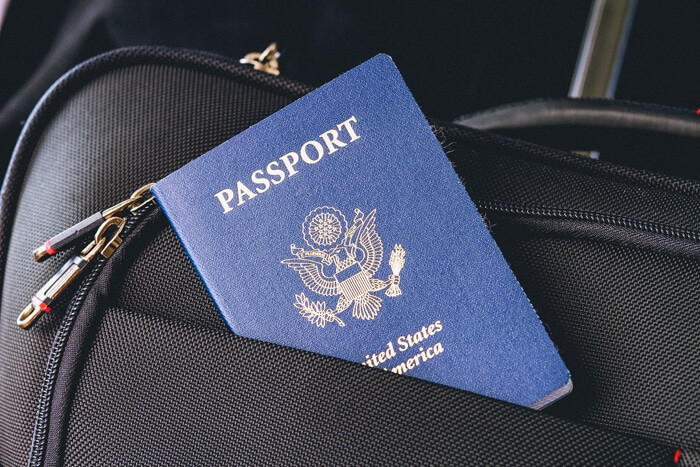
France is part of the Schengen zone and can be entered freely from other countries also in this zone. Citizens from EU countries which are not in the Schengen zone can still enter freely but must show their passport when entering the country.
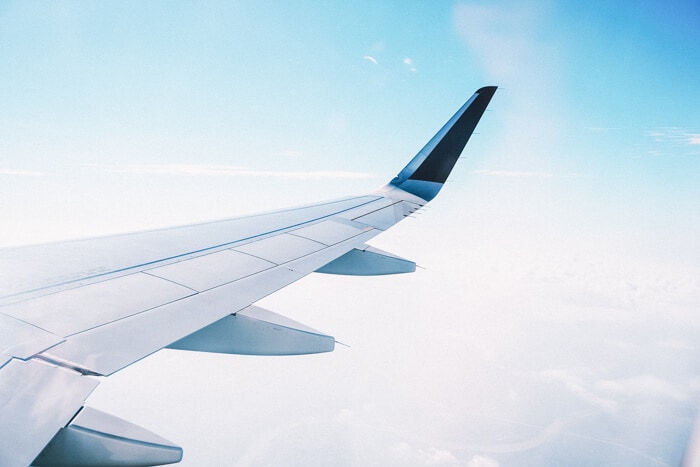
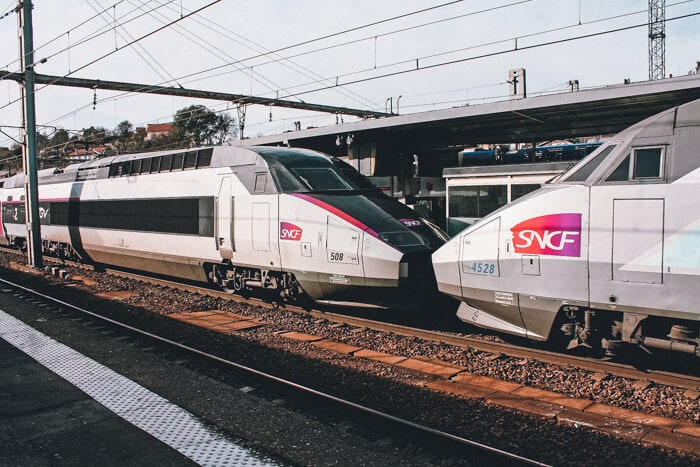
International trains connect France with almost every country in Europe. You can even travel to France by train from the UK on the Eurostar, which travels under the English Channel. Another option is the Eurotunnel, a train that allows you to bring a bicycle, car, or truck into the country.
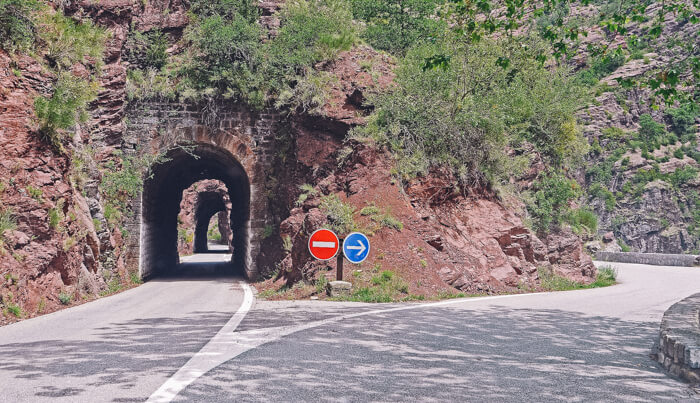
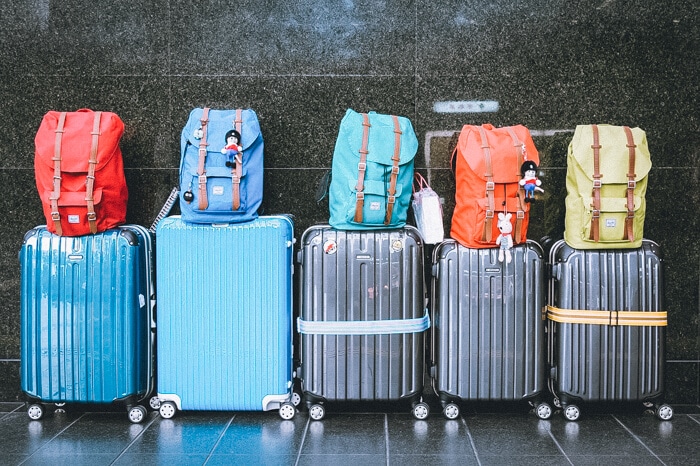
As France is such a large and diverse country, the weather and climate vary from region to region. In general, the climate across the country is characterized by hot summers and cold winters.
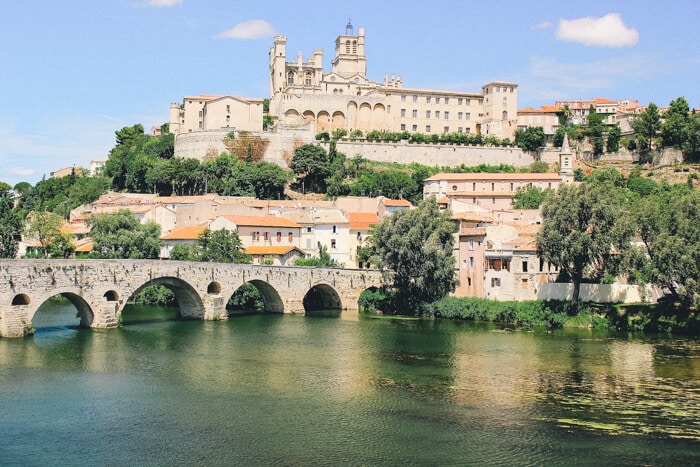
The best time to take a trip to France depends completely on what you want from your holiday. Paris is a popular destination year-round, but many other tourist areas in France have their own high seasons depending on what you’re looking for.
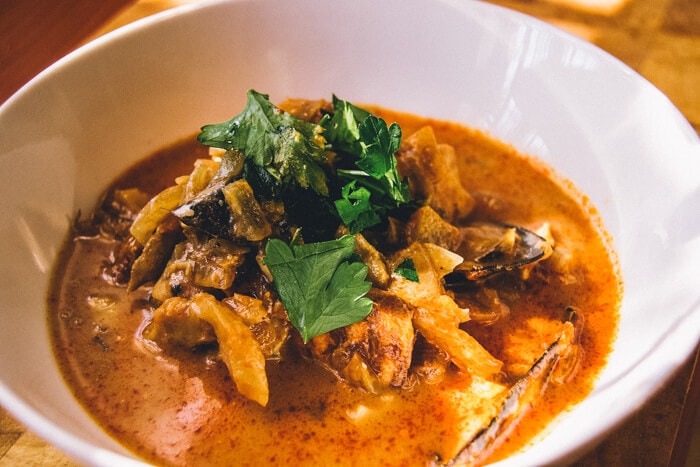
France has arguably one of the best cuisines in the world, and it’s really hard to select just 10 delicious things to try when you take a vacation to France. If you want to immerse yourself in local culture, you’ll need to try some of the local delacicies and the great thing about France is you’ll find good food wherever you go. Here are some of my favorites.
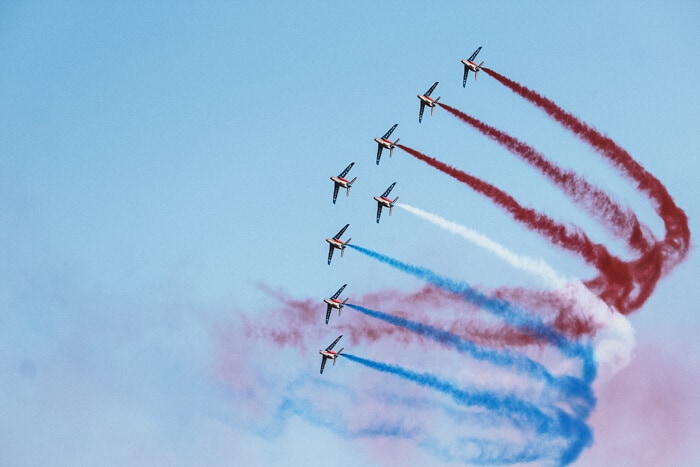
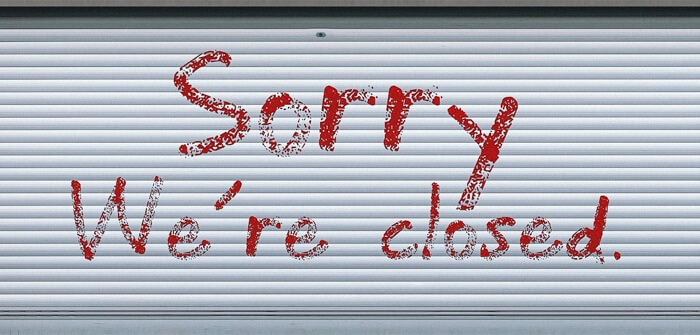
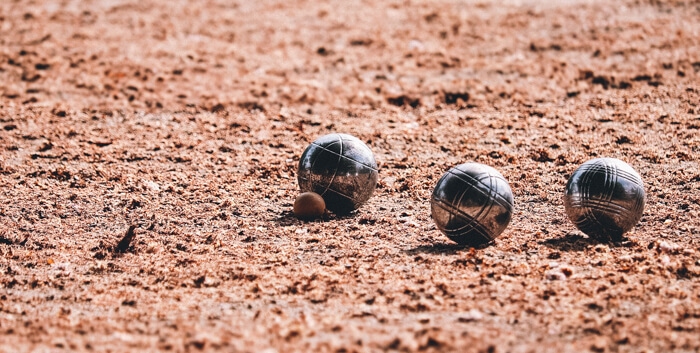
If you develop a friendship with French people, when you greet them you’ll be expected to “faire la bise” rather than a handshake or a hug. “Faire la bise” is the name of a traditional French greeting. It consists of touching your cheek against the other person’s cheek while making a kissing sound with your lips. Cheek and lips should not touch at any point. The number of kisses depends on the region.
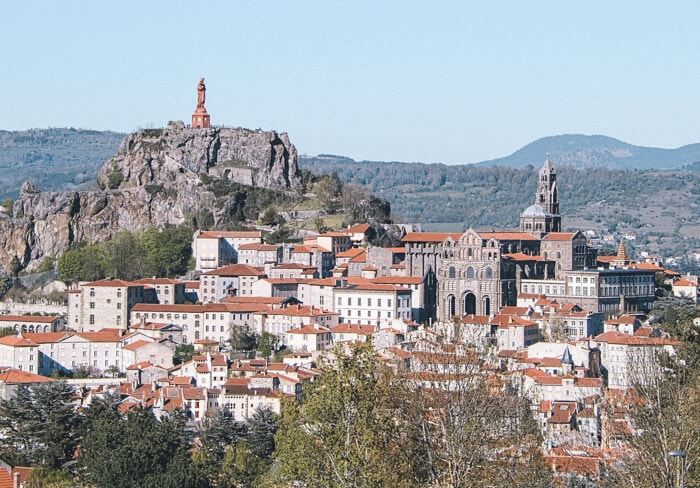
Goodbye
How are you?
I’m well, and you?
Yes
No
Please
Thank you
You’re welcome
Excuse me
I don’t speak French
Do you speak English?
I don’t understand
My name is…
How much is…
Where are the bathrooms?
I would like a croissant
Where is the museum?
I don’t feel well
The bill, please
Au revoir (oh rev-war)
Comment allez vous? (kohm-mohnt ahl-leh-voo)
Ça va bien, et vous? (sa va byen, eh voo)
Oui (Wee)
Non (Noh)
S’il vous plaît (sil voo pleh)
Merci (mer-see)
De rien (deh ree-en)
Pardonnez-moi (par-don-eh-mwah)
Je ne parle pas français (zhuh ney pahrl pah frahn-say)
Parlez-vous anglais? (par-leh-voo on-gleh)
Je ne comprends pas (jehn kom-pron pah)
Je m’appelle… (zhuh mah-pel)
Combien coûte… (kohm-byen koot)
Ou sont les toilettes? (oo sahn lay twah-leht)
Je voudrais un croissant (zhuh voo-dreh oon kwah-sahn)
Où est le musée? (oo ay luh moo-zay)
Je ne me sens pas bien (je neh meh sahn pah byen)
L’addition s’il vous plait (lah-dee-zyon sil voo pleh)
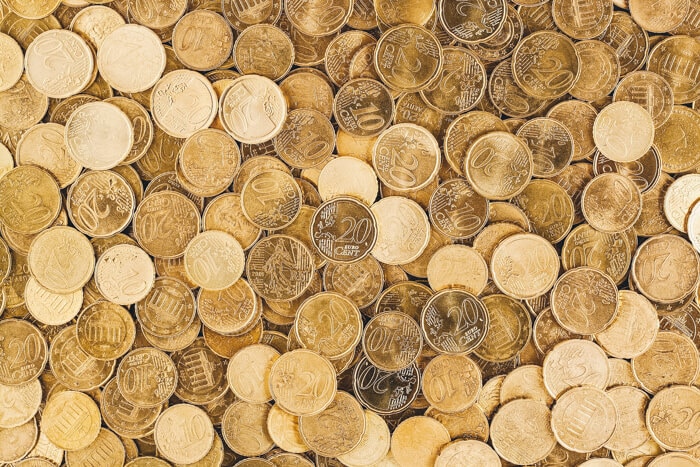
Credit and debit cards are widely accepted throughout France. However, it’s a good idea to carry some Euros on you if you are staying in a small B&B, going to an independent café or restaurant, or purchasing groceries at a market. ATMs are everywhere and you shouldn’t have any problems withdrawing money.
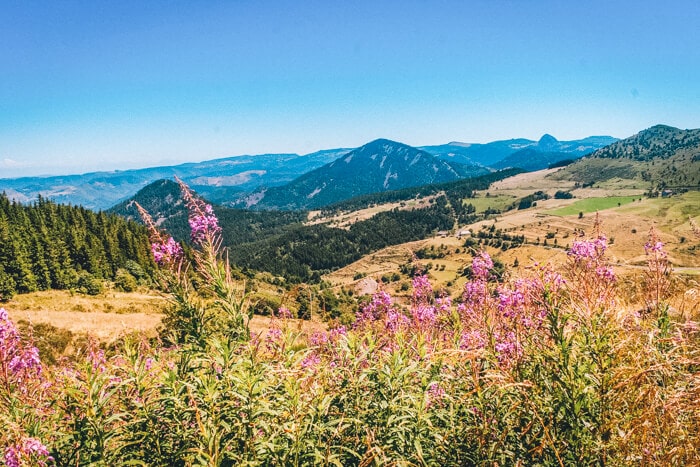
France has been inhabited for approximately 50,000 years, but it wasn’t always called France. Until 400 AD, it was called Gaul, but when Germanic tribes called Franks entered the, they gave it the name we know it by today.
